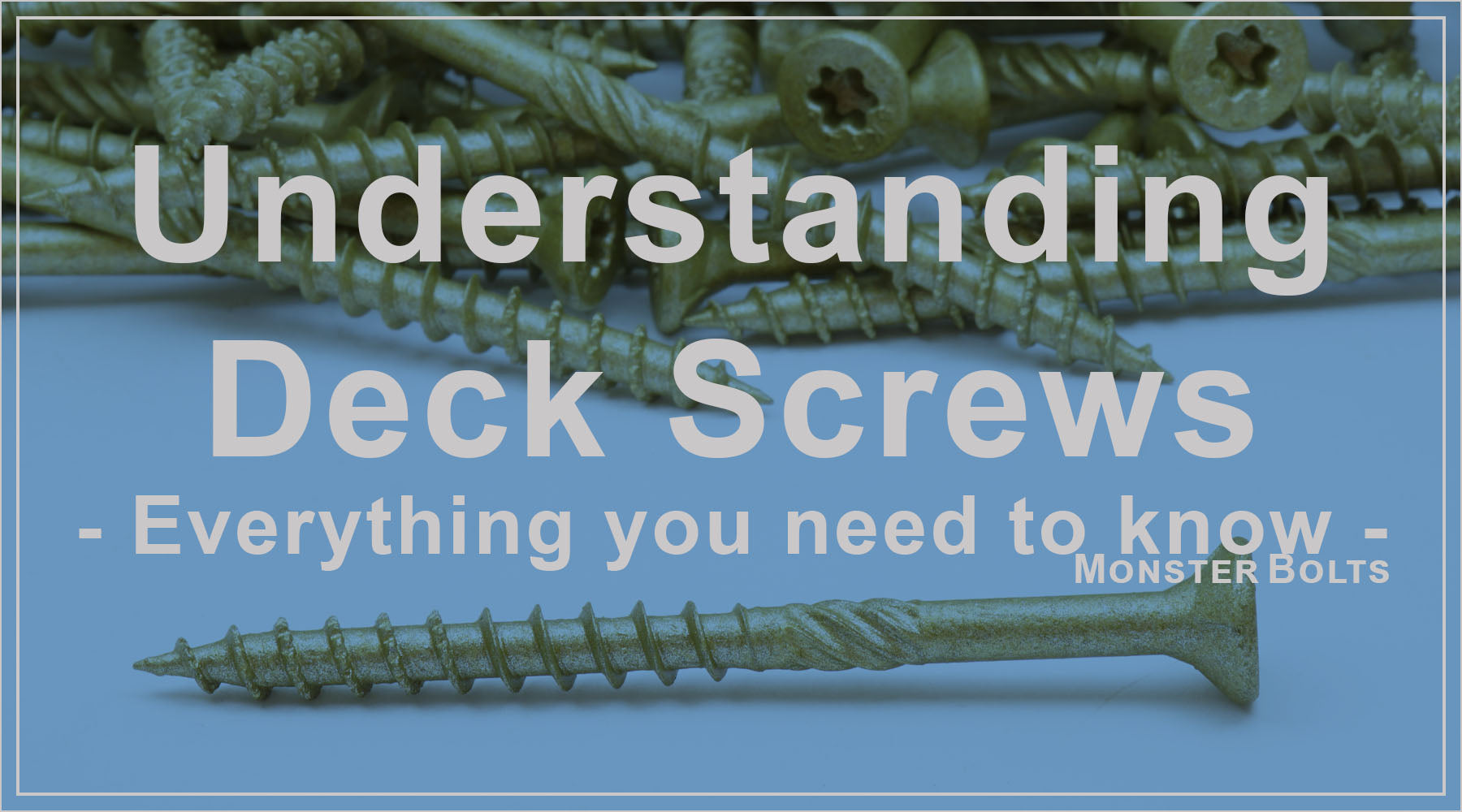Understanding Deck Screws: Everything You Need to Know

Quick Answer: Deck screws are purpose-built for outdoor projects. Their weather-resistant coatings, deeper threads, and sharp points help prevent board movement, reduce splitting, and keep decks solid for years.
Want a deep dive into modern deck screw technology and coatings? Read our Max Drive overview.
What Makes Deck Screws Different?
- Corrosion-resistant finishes designed for weather exposure and treated lumber.
- Deep, aggressive threads for lasting hold as boards expand/contract.
- Sharp/self-tapping points to start quickly and reduce splits—especially helpful near board ends.
- Modern drive types (e.g., 6-lobe/TORX®) that reduce cam-out versus Phillips.
How to Choose Deck Screws
Length Guidelines
Aim for ~1″–1-1/4″ of penetration into the joist.
| Decking Thickness | Recommended Screw Length | Notes |
|---|---|---|
| 5/4″ (≈1″ nominal) | 2-1/2″ | Common for wood and many composites. |
| 2″ nominal | 3″ | Heavier boards; verify joist spacing. |
| Dense hardwoods | 2-1/2″–3″ | Pre-drill to minimize splits and snapping. |
Coatings & Materials (At a Glance)
| Option | Best For | Watch Outs |
|---|---|---|
| Polymer-coated carbon steel | General outdoor use, pressure-treated lumber | Coating quality varies; choose tested finishes |
| Hot-dip galvanized | Treated lumber; rugged builds | Thicker coating; pre-drill may be needed |
| Stainless (A2 / 304) | High corrosion resistance inland | Softer vs carbon steel; price |
| Stainless (A4 / 316) | Coastal / marine exposure | Highest cost |
For a modern, lab-tested polymer finish with excellent outdoor performance, see our Max Drive overview.
Drive Type
- 6-lobe / TORX®: best grip, less cam-out, faster installs.
- Phillips: widely available but more cam-out under high torque.
Installation Tips for Better Decks
- Placement: About 1″ from board edges/ends; keep rows straight for even clamping.
- Pre-drill near ends, in knots, and with dense hardwoods to reduce splitting and snapped screws.
- Drive depth: Stop when the head is flush; avoid over-sinking which weakens the board surface.
- Gapping: Acclimate boards and maintain consistent gaps for drainage and seasonal movement.
- Bit match: Use the correct driver bit (ideally 6-lobe) to minimize cam-out and wear.
Frequently Asked Questions
Are deck screws structural?
No. Deck screws secure decking boards to framing. Use structural screws/bolts for load-bearing connections (e.g., ledgers).
Do I need to pre-drill?
Pre-drill near board ends, in dense species, and through knots. Many deck screws start without pre-drilling in softwoods, but pre-drilling improves results and reduces splits/snaps.
Can I use deck screws with pressure-treated wood?
Yes—choose finishes compatible with treated lumber. Modern polymer-coated deck screws are a great match for ACQ/treated wood.
How many deck screws do I need?
Plan roughly ~350 screws per 100 sq ft (two screws per joist per board). Adjust for joist spacing and board width.
What length should I choose?
Common picks: 2-1/2″ for 5/4″ decking and 3″ for 2″ nominal decking. Target at least 1″–1-1/4″ embedment into the joist.
For advanced coating details and feature design, see: Proferred Max Drive Deck Screws.

